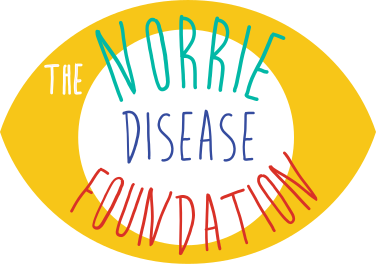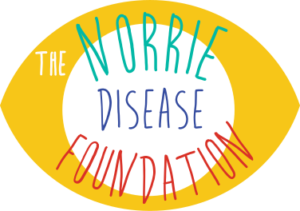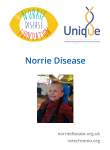Living with Visual and Hearing Impairment
Norrie Disease is a rare genetic condition causing blindness/severe visual impairment from birth.
Most affected individuals also suffer from progressive hearing loss often starting in early childhood.
For more detailed information see below or download our new Unique & NDF Norrie Disease Information Leaflet (PDF 559kb).
Our very own ambassador Anthony Pitch Ryers has produced a series of videos entitled "Flight For Sight" which highlights Anthony's story as a blind DJ and Producer, and one half of the Trance DJ due XiJaro & Pitch. You can view the videos here.
The Genetics of Norrie Disease
Norrie Disease is a congenital genetically inherited eye condition.
It is an X-linked recessive condition, caused by a mutation of the NDP gene on the X-chromosome.
A recessive condition is a condition where two copies of each chromosome need to be present for the disease to occur. However, as Norrie Disease is an X-linked condition, it would occur in every boy born with a faulty X-chromosome. Norrie Disease therefore usually occurs in boys, because boys only have one X-chromosome.
A girl with one abnormal X-chromosome will be a carrier but will not be affected if the other X-chromosome does not have the abnormal gene. Carrier females have a 50% chance of passing the gene unto the unborn male.
How common is Norrie Disease?
Around 40 cases in the UK are known and 500 globally. However, the Norrie community feel there are probably many more people with Norrie Disease who have not been diagnosed.
Visual impairment
Norrie Disease causes abnormal development of the blood vessels and tissues at the backs of the eyes. This affects the retina and; causing abnormal development to this sensitive part of the eye that detects light and colour, leading to retinal detachment. As a result, the irises (the coloured part of the eye) appear white when they have light shone on them; a symptom called leukocoria. Cataracts often develop. The irises and the entire eyeball may shrink during the first few months of life, causing profound visual impairment.
Visual impairment of any cause can create developmental challenges in some individuals which may result in developmental delay and later on, learning disability. Communication and behaviour can also be affected. Some (approximately 30%-50%) of boys with Norrie Disease have developmental delay, learning disability or behavioural issues.
Hearing loss
Progressive sensorineural hearing loss (hearing loss of nerve origin) is a secondary symptom of Norrie Disease and in many patients can start in early childhood. The hearing loss may be significant enough for hearing aids to be prescribed and in some cases, cochlear implants.
The NDF are committed to finding a treatment for the hearing loss and have current research projects towards this goal.
Other issues
Norrie Disease has been associated with peripheral venous insufficiency where the flow of blood through the veins is inadequate, causing blood to pool in the legs. Varicose veins and leg ulcers can develop.
For information on other issues please see the Unique leaflet.


